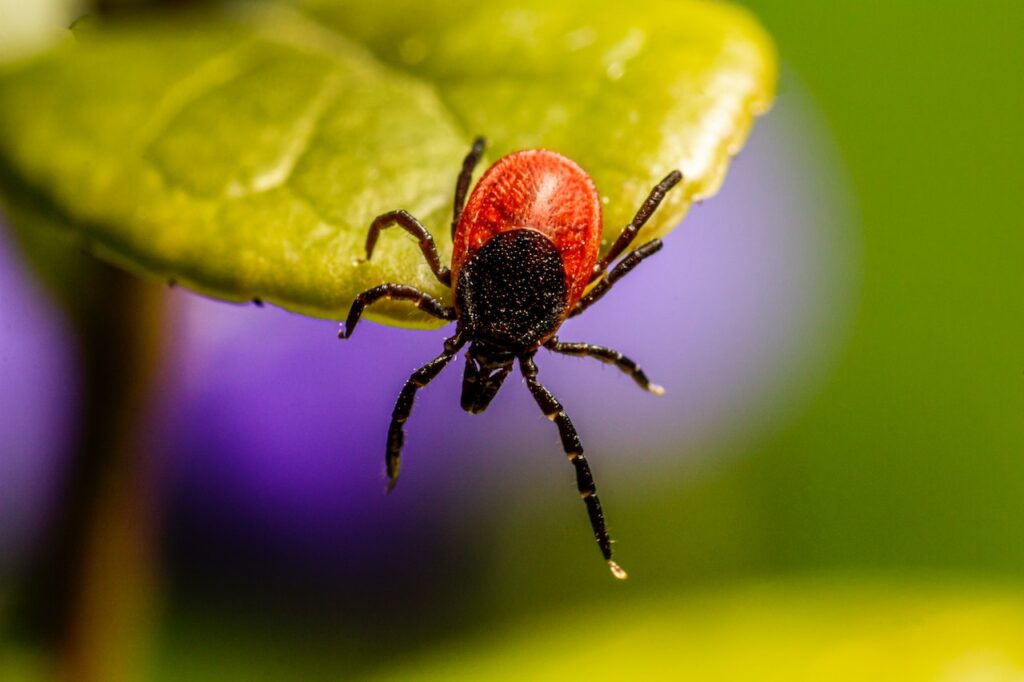
researchers of the San Francisco State University began a 3-year study at Edgewood Park on Lyme disease, which will focus on monitoring tick hosts such as mice, deer, and woodrats, as well as testing the efficacy of an indicated oral bait vaccine in limiting spread of the condition
According to the San Mateo County Council, the study will continue through December 2026.
Researchers will be able to work off-trail within Edgewood Park, but no study-related trail closures are planned, the county Parks Department noted.
What is Lyme disease?
Lyme disease is caused by a bacterium ?Borrelia burgdorferi? which is transmitted by ticks. It can be cured with early diagnosis and proper antibiotic treatment, but it can persist in the human body for years if not properly treated.
Lyme disease was named for Old Lyme, Connecticut, where the first cases of the disease were reported.
The first case in California was reported in 1978. It is currently the most commonly reported tick-borne disease in the state, as well as in the United States.
Each year, the state health departments and the District of Columbia report to the Centers for Disease Control and Prevention ?CDC, for its acronym in English? approximately 30 thousand cases of Lyme disease.
However, that number does not reflect all the cases of Lyme disease that are diagnosed in the United States each year. Standard national surveillance is just one way public health officials can track where a disease occurs and how often.
Recent estimates using other methods suggest that approximately 476,000 people may contract Lyme disease each year in the country.
Is the tick that transmits Lyme disease in San Mateo County?
Yes, the most common tick found in San Mateo County during the winter and spring is the western blacklegged tick 'Ixodes pacificus', a known vector of Lyme disease.
According to the San Mateo County Mosquito & Vector Control District, Lyme disease bacteria have been detected in approximately 3.0 percent of western blacklegged ticks in the county.
The department said infected ticks have been found along recreational trails throughout the county.
How do people get Lyme disease?
Adult ticks are commonly found when people's clothing rubs against grass or shrubbery along the edges of hiking trails. Tick nymphs are found on fallen logs and leaf litter in wooded areas. People can pick them up on clothing or skin when they lean against trees, sit on logs, or play with fallen leaves.
The nymphs are particularly dangerous because their small size allows them to go undetected, and they can feed on a person for several days without being found.
What are the symptoms and signs of Lyme disease?
An early sign of Lyme disease infection often includes a spreading "bulls-eye" rash that may be accompanied by fever, aches and/or fatigue.
Symptoms that occur during the later stages of the disease can include heart and/or nervous system complications, as well as severe arthritis. Lyme disease presents with a variety of symptoms and signs in different people. If you are infected, you may experience one, both, or neither of these symptoms/stages and they could overlap.
It should be noted that Lyme disease can be successfully treated in most cases of Lyme disease with antibiotics, but early treatment is important.
Some people may continue to experience symptoms even after being treated for Lyme disease. This is called "post-treatment Lyme disease syndrome." Researchers believe that it may be the result of residual damage to the body caused during the infection.
What does a tick look like?
In California, the western blacklegged tick is the primary carrier of Lyme disease. The adult female is reddish-brown with black legs, about 1/8 inch long; males are smaller and completely brownish-black. Ticks that have fed on blood ?called engorged? they will appear much larger, gray in color and can reach the size of a pea. Ticks in their immature life stages can be as small as the head of a pin or a poppy seed.
Where is the western blacklegged tick found?
This tick can be found in grass and brush along trail edges and along ecotones. Adult ticks feed on deer, rabbits, lizards, mice, and other animals.
Ticks do not fly, jump, or fall from trees. They climb to the tips of vegetation, usually along trails or animal paths, and wait for an animal or human host to brush past them before they can attach themselves.
You may be interested in: Mental health: the imminent need to take care of our well-being


